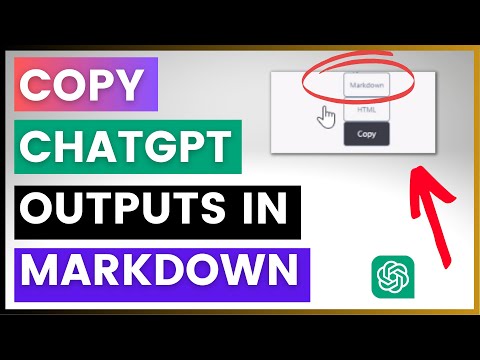Creating an AI super prompt is akin to crafting a masterful instruction manual for a creative AI system. It’s about guiding the AI with precision, ensuring it generates content that aligns perfectly with your vision. Here’s how you can unlock the full potential of AI super prompts, making them a powerful tool in your creative arsenal.
Understanding AI Super Prompts
An AI super prompt is a highly structured, detailed set of instructions designed to generate high-quality, on-target content from AI systems. Unlike regular prompts, which might be simple and open-ended, super prompts are comprehensive, including background information, clear objectives, examples, constraints, and formatting instructions. This structured approach ensures that the AI understands exactly what you’re asking for, leading to more reliable and relevant outputs.
Key Components of a Super Prompt
- Background Information: Setting the stage with relevant context helps the AI grasp the broader picture.
- Clear Objectives: Defining what you want to achieve keeps the AI focused on your goals.
- Examples: Providing samples of the desired output guides the AI in matching your expectations.
- Constraints: Specifying limits or rules narrows down the possibilities, ensuring the output stays within bounds.
- Formatting Instructions: Detailing how the content should be organized enhances readability and usability.
Crafting Effective AI Super Prompts
- Define Your Objectives: Start by clearly stating what you aim to accomplish with the AI-generated content.
- Gather Relevant Information: Collect data or insights that will help the AI understand the context and nuances of your request.
- Structure the Prompt: Organize your prompt logically, starting with background info, moving to objectives, then examples, constraints, and finally formatting instructions.
- Be Specific and Detailed: The more precise your instructions, the better the AI can meet your needs.
- Use Strong Action Verbs: Make your instructions dynamic and directive.
- Incorporate Storytelling Elements: Engage the AI creatively by weaving narratives or anecdotes into your prompt.
- Refine and Iterate: Test your prompt, analyze the output, and refine it based on feedback. Iteration is key to perfection.
- Optimize for Specific AI Models: Tailor your prompt to the capabilities and limitations of the AI model you’re using.
Practical Example: Crafting a Super Prompt for a Technical Guide
Imagine you need a comprehensive technical guide on solar panel installation. Your super prompt might include:
- Background Information: “Solar energy is increasingly popular due to its environmental benefits and cost savings.”
- Objectives: “Create a step-by-step guide covering the entire process of installing solar panels, from site assessment to final inspection.”
- Examples: “Include diagrams showing the layout of solar panels and electrical connections.”
- Constraints: “Avoid jargon; assume the reader has a basic understanding of electricity.”
- Formatting Instructions: “Organize the guide into sections: Introduction, Site Assessment, Installation Process, Safety Measures, Troubleshooting.”
Background Information: Provide a brief overview of solar energy, emphasizing its growing popularity due to environmental benefits and cost savings.
Objective: Develop a comprehensive, step-by-step guide detailing the process of installing solar panels, from conducting a site assessment to completing the final inspection.
Content Requirements:
Include diagrams illustrating the layout of solar panels and the electrical connections involved in the installation process.
Ensure the guide is accessible to readers with a basic understanding of electricity, avoiding excessive jargon.
Formatting Guidelines:
Organize the guide into distinct sections: Introduction, Site Assessment, Installation Process, Safety Measures, and Troubleshooting.
Instructions for the LLM:
Generate a document that meets the above specifications, focusing on clarity and simplicity to cater to a broad audience interested in solar panel installations.Benefits of Using AI Super Prompts
- Improved Output Quality: Super prompts lead to more coherent, relevant, and well-structured content.
- Consistency: Reusable templates ensure uniformity across different projects.
- Time-Saving: Well-crafted prompts reduce the need for extensive editing.
- Customization: Tailor the AI’s output to fit your exact specifications.
- Enhanced Creativity: Provides a solid framework for exploring innovative ideas.
By mastering the art of crafting AI super prompts, you unlock a powerful tool for leveraging AI in creative endeavors, ensuring that every piece of AI-generated content meets your exact standards and exceeds your expectations.
Understanding AI Super Prompts
In the rapidly evolving landscape of technology, artificial intelligence (AI) has emerged as a transformative force across various sectors, including healthcare, finance, and entertainment. Among the myriad applications of AI, one area stands out for its potential to redefine creativity: the generation of artistic and narrative content. Central to this creative revolution are AI design prompts, which serve as the bridge between human intent and AI capability, guiding these systems to create works that are both innovative and aesthetically pleasing.
The Emergence of AI Super Prompts
AI Super Prompts represent the pinnacle of this technological advancement, offering a sophisticated method to harness the vast capabilities of AI for creative endeavors. These super prompts are meticulously crafted instructions that leverage AI’s processing power to generate outputs that surpass conventional expectations. By distilling complex ideas into concise, yet comprehensive directives, AI Super Prompts enable AI systems to produce works that are not only technically proficient but also deeply resonant with human emotions and aesthetics.
Crafting AI Super Prompts
Creating an effective AI Super Prompt requires a deep understanding of both the creative process and the technical limitations of AI. It involves identifying the core elements of a desired outcome—be it a specific style, mood, or theme—and translating these into a format that AI can interpret and act upon. This process often involves trial and error, as well as iterative refinement, to achieve the optimal balance between guidance and freedom, allowing the AI to explore its creative potential while staying true to the intended vision.
Practical Example: Generating Artistic Content
Consider a scenario where an artist wants to use AI to create a series of abstract paintings. The AI Super Prompt might be something along the lines of “Generate abstract art inspired by the movement of water and light, with a focus on vibrant colors and dynamic shapes.” This prompt provides the AI with a clear direction—abstract art, movement, water and light as themes, and specific aesthetic preferences—while leaving room for the AI’s algorithmic creativity to shine through.
The Impact of AI Super Prompts
The development and application of AI Super Prompts have far-reaching implications for the creative industry. They democratize access to high-quality creative content, enabling artists, designers, and writers to leverage AI’s capabilities without needing extensive technical expertise. Moreover, AI Super Prompts open up new avenues for collaboration between humans and machines, fostering a symbiotic relationship where each complements the other’s strengths, leading to innovative and groundbreaking creations.
In conclusion, AI Super Prompts represent a significant leap forward in the intersection of technology and creativity. By bridging the gap between human imagination and AI’s computational prowess, they offer a powerful tool for generating content that is both technologically advanced and emotionally resonant. As we continue to explore the possibilities of AI in creative fields, the role of AI Super Prompts will undoubtedly become even more central to shaping the future of art and storytelling.
Mastering AI Design Prompts: A Guide to Crafting Effective Instructions
Understanding AI Design Prompts
AI design prompts serve as the compass for AI creativity, guiding the system to generate content that matches specific styles, themes, or goals. Think of them as the blueprint for AI’s creative endeavors, ensuring that the output aligns seamlessly with what the creator intends.
The Power of Precise Prompts
Crafting precise AI design prompts is akin to fine-tuning a masterpiece. It requires a balance between specificity and flexibility, allowing the AI enough room to innovate while keeping it focused on the intended outcome. For instance, instead of asking an AI to “write a story,” a more effective prompt might be “Write a suspenseful detective story set in a small town during the 192s.”
Practical Examples and Tips
Example 1: Content Creation
Imagine you want an AI to create a blog post about sustainable living. A generic prompt might be “Write a blog post about sustainability.” However, a more targeted approach could be “Compose a persuasive blog post advocating for eco-friendly practices, aimed at millennials interested in reducing their carbon footprint.”
Example 2: Image Generation
For generating images, specificity is key. Instead of saying “Generate an image,” which could lead to a wide array of results, specify the mood, style, and subject matter, such as “Create a vibrant, abstract expressionist painting featuring a city skyline at sunset.”
Why Precision Matters
Precision in AI design prompts is crucial because it narrows down the vast possibilities that AI offers, directing its creative process towards achieving the desired result. This precision not only saves time but also ensures consistency across various outputs, making the creative process more predictable and manageable.
Engaging Visual Aids
While this text-based format doesn’t allow for visual aids directly, imagine how much easier it would be to craft effective prompts if you had charts comparing different levels of specificity and their outcomes, or images showcasing before-and-after effects of refining prompts.
Conclusion
Mastering the art of crafting effective AI design prompts is essential for leveraging AI’s capabilities to their fullest. By being specific yet flexible, creators can harness AI’s power to enhance their creative projects, making the process more efficient and the results more aligned with their vision.
Understanding AI Super Prompts
What Are Super Prompts?
As artificial intelligence (AI) continues to evolve, the complexity of prompts needed to achieve specific results also increases. These advanced prompts, known as “Super Prompts,” are carefully constructed to obtain precise outputs from sophisticated AI models such as ChatGPT. Unlike basic prompts, which might simply ask a question or request information, Super Prompts are multi-layered and strategically structured to coax the AI into providing the most accurate and nuanced answers.
Crafting Effective Super Prompts
Creating an effective Super Prompt requires a blend of creativity, technical knowledge, and a thorough understanding of how AI processes information. Here’s a breakdown of the key elements involved in crafting these prompts:
Layering Information
One of the hallmark features of Super Prompts is their layered structure. This means embedding multiple pieces of information within a single prompt to guide the AI through a thought process. For example, instead of asking “What is the capital of France?”, a Super Prompt might layer additional context: “Provide a brief history of Paris, including its evolution as the capital city of France.”
Organizing Content
Organizing content within Super Prompts is crucial for clarity and efficiency. This could involve structuring the prompt in a logical sequence or grouping related questions together. For instance, when seeking detailed information, a well-organized Super Prompt might first ask for general background before delving into specifics.
Detailing Expectations
Detailing expectations within Super Prompts helps ensure that the AI understands exactly what is being asked. This can be achieved by specifying the level of detail required, the format of the response, and even the tone of the answer. For example, “Provide a comprehensive analysis of climate change impacts on agriculture, focusing on the next decade, in a concise report format.”
Practical Examples
To illustrate the power of Super Prompts, consider a scenario where you need to gather insights on customer feedback from social media. A basic prompt might ask, “Analyze customer feedback.” However, a Super Prompt could be:
“Summarize the main themes emerging from recent customer feedback on our product across various social media platforms. Include positive sentiments, areas for improvement identified by customers, and any recurring complaints. Provide this analysis in a bullet-point format for easy readability.”
This approach not only guides the AI in extracting relevant information but also structures the output in a way that’s directly useful for decision-making.
Why Super Prompts Matter
The ability to craft Super Prompts represents a significant advancement in human-AI interaction. It allows users to leverage AI’s vast processing power and knowledge base more effectively, obtaining highly tailored and actionable insights. As AI technology becomes increasingly integrated into our daily lives, mastering the art of creating Super Prompts will become a valuable skill for anyone looking to harness AI’s potential fully.
By understanding and applying the principles of Super Prompts, individuals and organizations can enhance their interactions with AI systems, achieving better outcomes and making more informed decisions based on the AI’s responses.
Crafting AI Super Prompts: A Strategic Guide
Creating an AI super prompt is akin to crafting a master key for unlocking the vast potential of artificial intelligence. It’s not just about generating text; it’s about guiding the AI to produce content that meets your exact needs, whether it’s writing a compelling blog post, designing a logo, or even composing music. Here’s how you can do it effectively:
Define Your Objective
First things first, you need to be crystal clear about what you want from the AI. Are you looking for a short story, a detailed report, or perhaps a catchy slogan? Defining your task precisely sets the stage for everything else.
Craft Detailed Instructions
Imagine giving directions to a friend who doesn’t know the area well. You’d want to be as specific as possible, right? The same goes for crafting instructions for your AI. Use simple, straightforward language that leaves no room for misinterpretation. For example, instead of saying “Write a poem,” specify “Write a 12-line sonnet in iambic pentameter about the beauty of nature.”
Establish Evaluation Criteria
Before you start, decide how you’ll measure success. Will you base it on length, style, or perhaps the emotional impact of the generated content? Having clear evaluation criteria helps you fine-tune your prompts and get better results over time.
Utilize Industry Best Practices
Leverage the wisdom of those who’ve gone before you. Look into best practices within your field—what works, what doesn’t, and why. This could mean studying successful campaigns, reading influential articles, or even consulting with experts in your domain.
Tailor Your Prompts to Your Audience
Consider who will be consuming the AI-generated content. Is it for a tech-savvy crowd, or something more mainstream? Tailoring your prompts to match the expectations and preferences of your target audience ensures your content resonates and achieves its intended effect.
Offer Relevant Resources
Sometimes, providing a bit of extra context can significantly enhance the quality of the output. This might involve sharing relevant links, images, or even historical data that can help the AI understand the nuances of your request better.
Avoid Ambiguity Like the Plague
Ambiguous prompts lead to ambiguous results. Make sure your prompts are specific enough to guide the AI but also flexible enough to allow for creativity. This balance is crucial for getting high-quality, unique content without sacrificing clarity.
By following these steps, you’re not just creating a prompt; you’re setting the stage for a collaboration between human ingenuity and AI power. Remember, the goal isn’t just to generate content; it’s to create something that genuinely adds value and meets your specific needs. With practice and patience, crafting AI super prompts becomes second nature, opening up a world of possibilities for content creation.
The Power of AI Super Prompts: A Dive into Innovation
AI Super Prompts are revolutionizing the way we approach creativity and productivity, offering a blend of efficiency and innovation that was once unimaginable. Let’s delve deeper into how these advanced tools are reshaping our world.
Accelerating Your Creative Workflow
Imagine being able to generate high-quality content in a fraction of the time it would normally take. That’s exactly what AI Super Prompts do. They automate repetitive creative tasks, freeing up your time to focus on more strategic aspects of your work. For instance, a writer could use an AI Super Prompt to draft several story outlines in minutes, allowing them to explore more ideas without the usual time constraints.
Unlocking New Dimensions of Creativity
Beyond just speeding up processes, AI Super Prompts enhance creativity by introducing novel ideas and perspectives. These systems can analyze vast amounts of data and media, identifying patterns and connections that humans might miss. This capability opens up entirely new creative territories, enabling artists, designers, and creators to innovate in ways they never thought possible.
Cost Efficiency: Making High-Quality Content Accessible
One of the most significant advantages of AI Super Prompts is their cost-effectiveness. By handling many creative tasks, these systems reduce the need for extensive human resources, leading to substantial savings. This efficiency makes high-quality creative outputs more affordable, democratizing access to professional-grade content for everyone from small businesses to individual creatives.
Practical Example: Generating Marketing Copy
Let’s consider a practical example to illustrate how AI Super Prompts can be used in real-world scenarios. Suppose you’re tasked with creating compelling marketing copy for a new product launch. Instead of spending hours drafting and refining text, you could use an AI Super Prompt to generate several versions of the copy, each tailored to different target audiences. This process not only saves time but also ensures that your messaging is diverse and inclusive.

In conclusion, AI Super Prompts represent a groundbreaking advancement in artificial intelligence, offering tangible benefits across various industries. Their ability to accelerate workflows, enhance creativity, and reduce costs positions them as indispensable tools for anyone looking to stay ahead in today’s fast-paced digital landscape.
Understanding AI Super Prompts
AI Super Prompts represent a groundbreaking fusion of artificial intelligence and human creativity, offering creators unparalleled tools to enhance their projects. These advanced prompts are designed to interact with AI models, guiding them to generate content that aligns with specific goals, whether it’s writing a compelling narrative, designing a unique piece of art, or even composing music. The key to unlocking the full potential of AI Super Prompts lies in understanding how they work and how to use them effectively.
How Do AI Super Prompts Work?
At its core, an AI Super Prompt is essentially a structured set of instructions or questions that guide an AI model towards generating desired outcomes. For instance, if you’re looking to write a short story, an AI Super Prompt might ask the AI to create “a suspenseful detective story set in a small town during the 192s.” This prompt provides the AI with enough context to start generating content that fits the specified theme and era.
Practical Applications of AI Super Prompts
The applications of AI Super Prompts are vast and varied, spanning across several creative fields:
- Writing: Authors can use AI Super Prompts to generate character descriptions, plot twists, or entire chapters, significantly speeding up the writing process and sparking inspiration.
- Art and Design: Artists and designers can leverage AI Super Prompts to explore new ideas, experiment with different styles, or even assist in creating detailed digital illustrations and designs.
- Music Composition: Composers can utilize AI Super Prompts to generate musical themes, chords progressions, or even complete songs, opening up new avenues for musical expression.
Crafting Effective AI Super Prompts
Creating effective AI Super Prompts requires a balance between specificity and openness. Too broad, and the AI may generate irrelevant content; too narrow, and the AI might struggle to find a solution. Here are some tips for crafting effective prompts:
- Be Specific: Clearly define what you want from the AI. Use descriptive language that paints a vivid picture of the desired outcome.
- Keep It Open-ended: Allow room for the AI’s creativity. Instead of asking the AI to write a story with a specific ending, you might ask it to develop characters and settings, leaving the resolution open.
- Experiment: Don’t be afraid to iterate on your prompts. What works well one day might need adjustment the next, especially as AI technology continues to advance.
The Future of AI Super Prompts
As AI technology progresses, the capabilities of AI Super Prompts will continue to expand, offering creators even more powerful tools to express themselves and bring their visions to life. With ongoing advancements in natural language processing and machine learning, we can expect to see AI Super Prompts becoming increasingly sophisticated, capable of understanding and generating content in ways that were previously unimaginable.
In conclusion, AI Super Prompts stand at the forefront of the creative revolution powered by AI. By embracing these tools, creators have the opportunity to push the boundaries of what’s possible, fostering innovation and driving the evolution of various creative disciplines.












